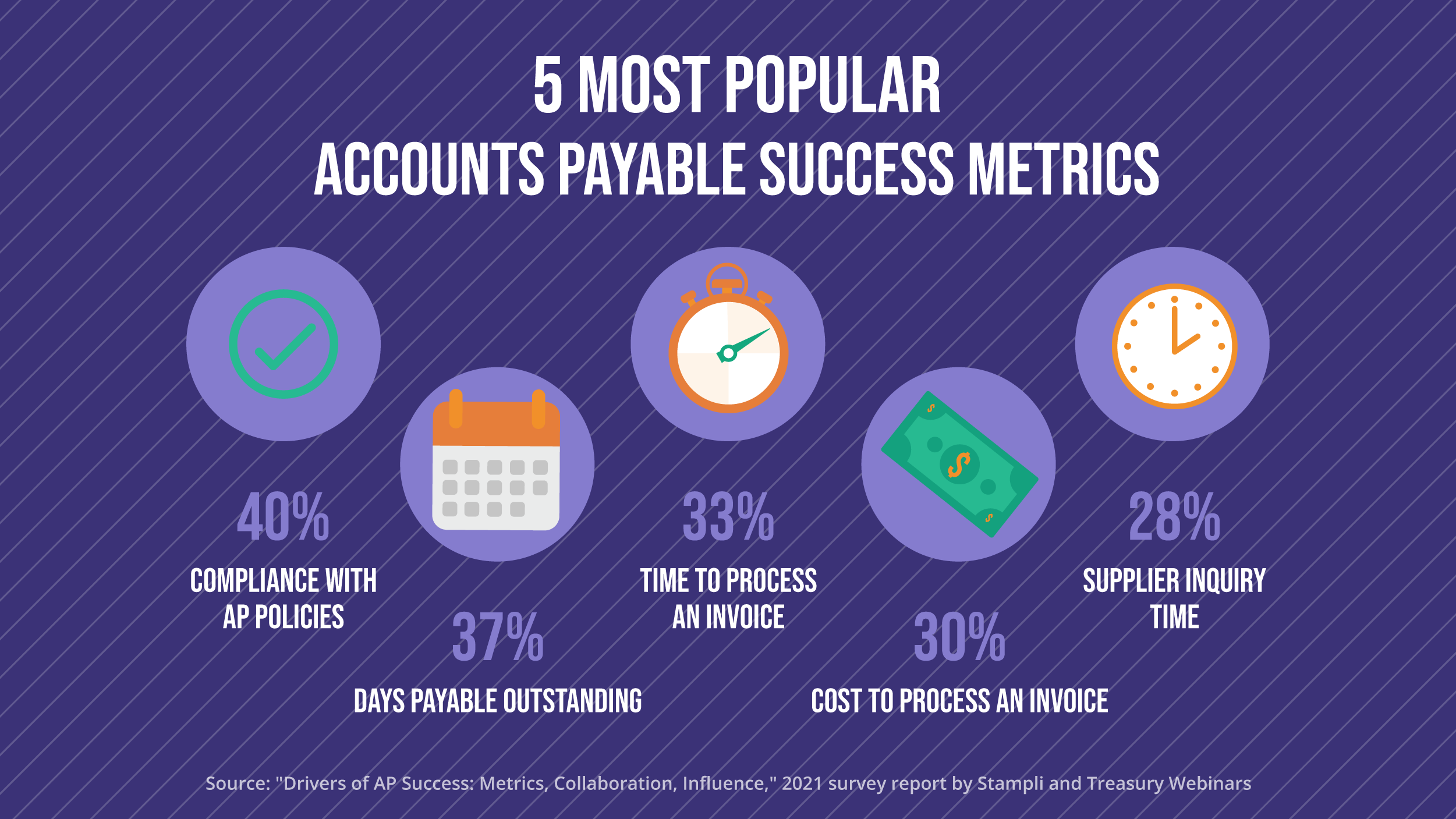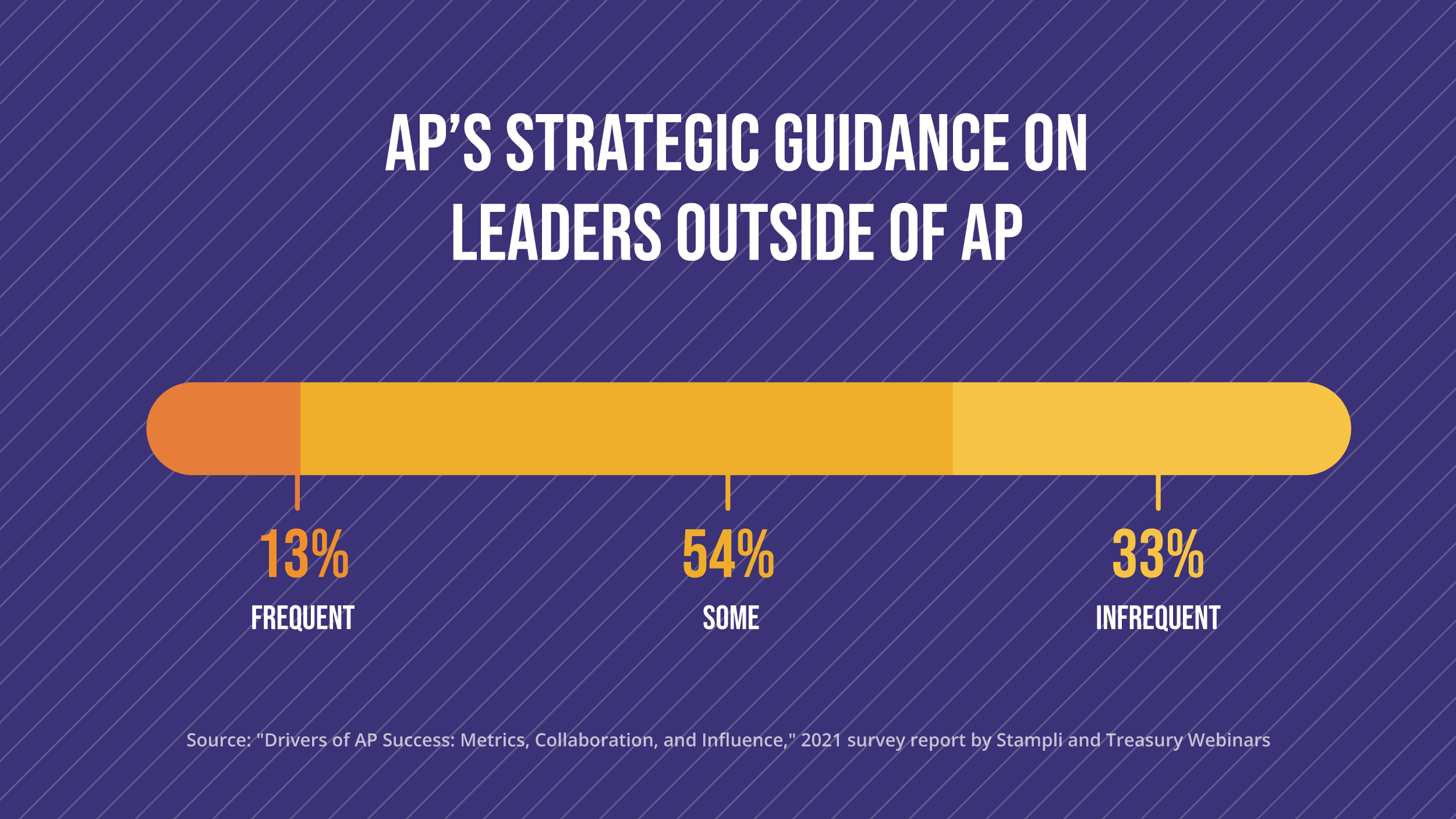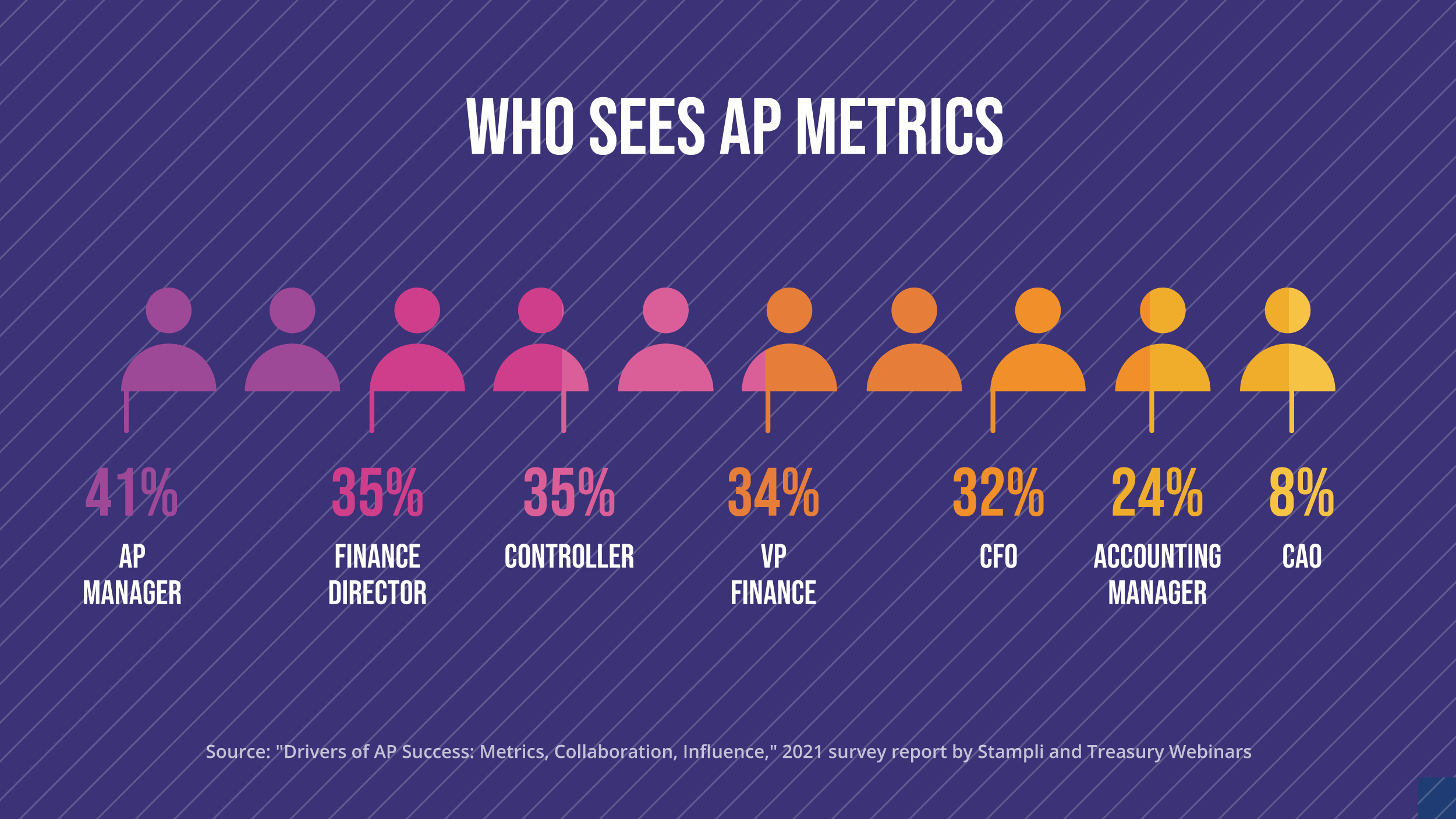Unlocking the Power of Your Accounts Payable Data

For Evgeny Fetisov, CFO of Boston-based Semrush, data isn’t compiled just for data’s sake. As Fetisov told Stampli during a recent podcast, the key is how his department exchanges data with other divisions. “We treat them, other departments as our clients,” Fetisov said. “Our key goal is to give them data for them to make decisions.”
In this blog, we share strategies for establishing and capturing KPIs, and how to unlock accounts payable data so relevant stakeholders can make more informed business decisions.
Establishing and Capturing KPIs
It can quickly become apparent working in accounts payable that a veritable mountain of data exists within the department and its systems, from accounting systems and enterprise resource planning (ERP) systems, to general ledgers and documentation. Knowing where to start can seem overwhelming, but we have good news as we share how to get started below.
Creating a Business Intelligence Strategy
The first step in establishing and capturing KPIs, or key performance indicators at a company can be to figure out its business intelligence (BI) setup. Clearly, the more time a company can spend analyzing its data, the better. It can allow for smarter and more fiscally-sound decisions. While a BI system can host most or all of an organizations data, one doesn’t need a comprehensive BI software to gain BI insights when it comes to accounts payable data. Rather, the relevant stakeholders can easily access AP data through an AP Automation system.
If you’re still operating AP in Excel, you’re not alone as a 2021 survey report that Stampli collaborated on with Treasury Webinars, “Drivers of AP Success: Metrics, Collaboration, Influence” found 35% of companies were still calculating accounts payable metrics manually in Excel. The benefit of moving away from excel into an AP Automation software is that the data moves from a local desktop to the cloud where all relevant stakeholders can have access to AP data.
The takeaway when it comes to a BI strategy is to move AP data to the cloud if that has not already been considered. If your AP data is already in the cloud, great, you can read on what to look at in terms of data below.
What AP Success Looks Like, Data-Wise
Fetisov talked about how his department measures success, sharing, “The most obvious indicator is how many new customers we got into the door.” Fetisov then noted other indicators, such as that growth is split 50-50 between paid and organic efforts and that a generally short acquisition cycle allows Semrush to see results quickly.
Within Stampli, there’s also been some effort to define what AP success looks like, with Stampli and Treasury Webinars’ recent survey noting something telling: Though there isn’t really consensus, there are a wide breadth of metrics being tracked or considered. The most popular being: compliance with AP policies, days payable outstanding, time to process an invoice, cost to process an invoice, and supplier inquiry time.

It’s up to companies to decide which AP metrics matter most to them. For public-facing firms that might have Sarbanes-Oxley Act obligations, compliance can be paramount. To other businesses, closing tracking the cost or time to process invoices might lead to large savings.
How Automation Helps Capture Accounts Payable Data
BI software can be great for helping a company better understand its metrics, though automation software is key for capturing accounts payable data.
AP automation software comes with intelligent artificial intelligence and machine learning built-in, which extracts invoice data and in turn, can be leveraged. Some example uses cases would be for data around invoices in process, the invoice lifecycle, and even employee performance metrics.
At the end of the day, no accounts payable data strategy is really complete without AP automation.
Getting People to Care About Accounts Payable Data
Arguably the first step for a company to gain a competitive advantage from data is to compile and make sense of it. The greater challenge, perhaps? Getting others within a company — particularly anyone who might not be analytically-inclined — to see the value of the data and act on it.
Accounts payable data can be undervalued. Stampli’s report on AP success metrics, for one, found that just 13% of AP departments provided “both transactional and strategic guidance to leaders outside of AP frequently for decision support related to growth and innovation.” Meanwhile, a 2020 study found two-thirds of C-suite executives at least sometimes ignored data in favor of intuition.

While intuition can safeguard against excessive reliance on algorithms, it’s important to foster a corporate culture open to data. Below are some ways to encourage this.
The Importance of Useful and Accessible Data
Fetisov is mindful when he or his team offer data at Semrush, telling Stampli, “The data that we’re providing has to be as real-time as possible and it has to be easily accessible to anyone within the organization.”
Timeliness and accuracy can be a problem for departments lacking fully-implemented AP automation platforms. AP departments are also often stretched thin, with a 2021 survey report by Stampli and Treasury Webinars, “AP Today: Bottlenecks, Benchmarks & Best Practices” finding 31% of companies had at least 500 vendor relationships, while 47% had five or fewer full-time AP employees.
Good data, which AP automation plays a key role in compiling, can help even the leanest of operations know they’re meeting their obligations, processing invoices in a timely and cost-efficient manner, and know what their liabilities are so finance can better manage cashflow.
Engaging Upper Management
Toward the end of the podcast, Fetisov touched on the value of human connection. “When I think about finance and the important things that I personally (have) learned, it’s that you have to be able to build good relationships within the organization,” Fetisov said. “So it’s not only about numbers, right? It’s about how to make sure that people are getting your numbers.”
It can be helpful to know who most commonly sees accounts payable data. Stampli and Treasury Webinars’ report on AP success found that metrics were most often reported to accounts payable managers, at 41%, though a range of other C-suite executives and internal stakeholders can have interest.
Of course, gaining a reputation for providing good data might stoke interest. When it’s clear AP is doing what it takes to make this happen, metrics can be broadly disseminated. It’s all about focusing on relationships and making it implicit to management that their time is valued by giving them the most salient data.

How Stampli Helps Maximize Your Accounts Payable Data
Sometimes, good accounts payable data can languish undiscovered, preventing companies from gaining insight that could help improve their AP processes, saving time and money. This isn’t an issue, however, with Stampli’s AP automation platform, which has been designed with an eye toward helping companies discover and leverage their accounts payable data.
Here are some capabilities of Stampli that help companies that use it get the most out of their accounting metrics.
Stampli Dashboards
With Stampli, accounts payable data doesn’t have to stay siloed with Stampli Dashboards. While company management retains control of who can see AP data, Stampli enables role-based permissions to view this AP data in the Stampli Dashboards feature.
Stampli offers three out-of-the-box, customizable Dashboards with interactive Widgets and KPIs to visualize your AP data. Available Dashboards include:
- In Process Dashboard
- Invoice Lifecycle Dashboard
- User Productivity Dashboard
Dashboards can be customized by adjusting widget order, applying filters, setting date range, or drilling down into underlying data for a more comprehensive view.
Embedded Payment and Spend Management Options
Stampli has also been helping to create better accounts payable data in recent years by including payment and spend management options in its suite. This came about partly because some other AP automation platforms don’t include payment, forcing users to go beyond the system after processing invoices in order to get them paid.
Separating B2B payments from invoice processing can create a disconnect, both in terms of workflows and accounts payable data. With Stampli Direct Pay, however, companies can schedule ACH payments and print checks directly within the platform. Stampli has even debuted the Stampli Card, giving companies even more payment options within the system.
AI and Machine Learning to Compile Data and Highlight Outliers
There’s also good accounts payable data through Stampli because humans aren’t required to input it, with invoice data entry a sometimes reviled task for AP staff.
Stampli gives AP workers a break from data entry, letting its AI virtual assistant, Billy the Bot scan invoices into the system. Billy will instantly capture and code invoices, and attach approvers once an invoice arrives in Stampli. Moreover, Stampli and Treasury Webinars’ report on AP bottlenecks noted that 40% companies still receive paper invoices and that’s no problem either.
In Conclusion
As Evgeny Fetisov noted, being mindful of human relationships is critically important in ensuring that data gets properly disseminated. Stampli is a vital tool in honoring this.
Process invoices cheaper and faster and gain actionable accounts payable data. Learn more today about AP automation from Stampli.